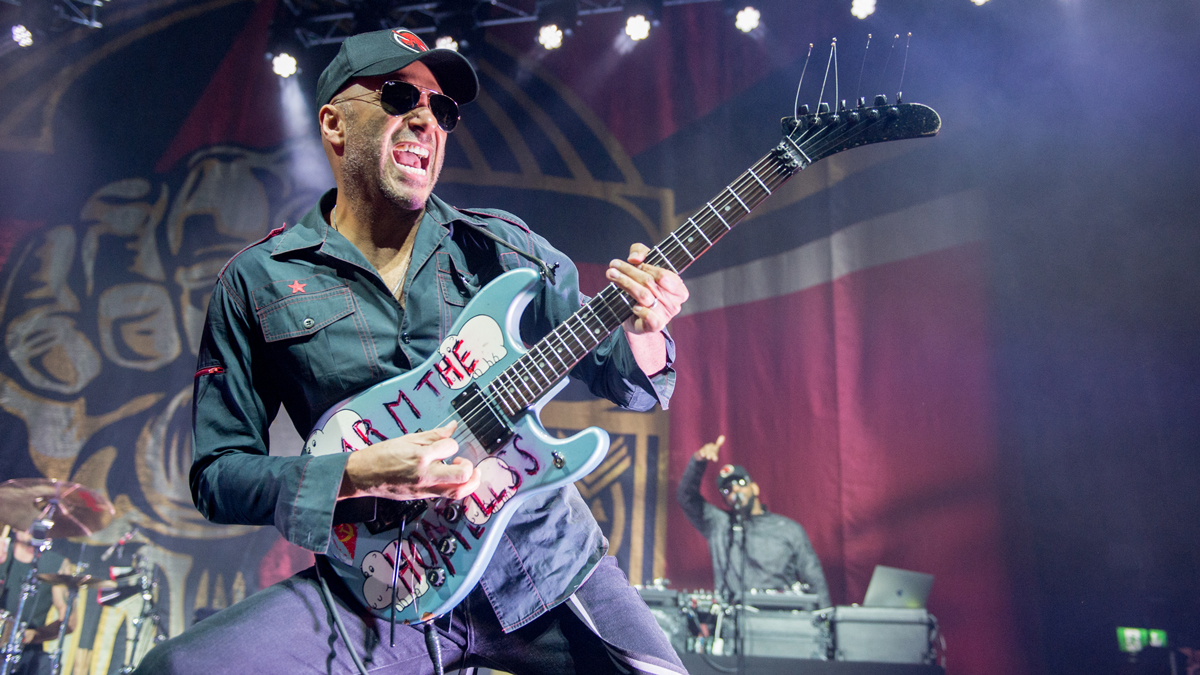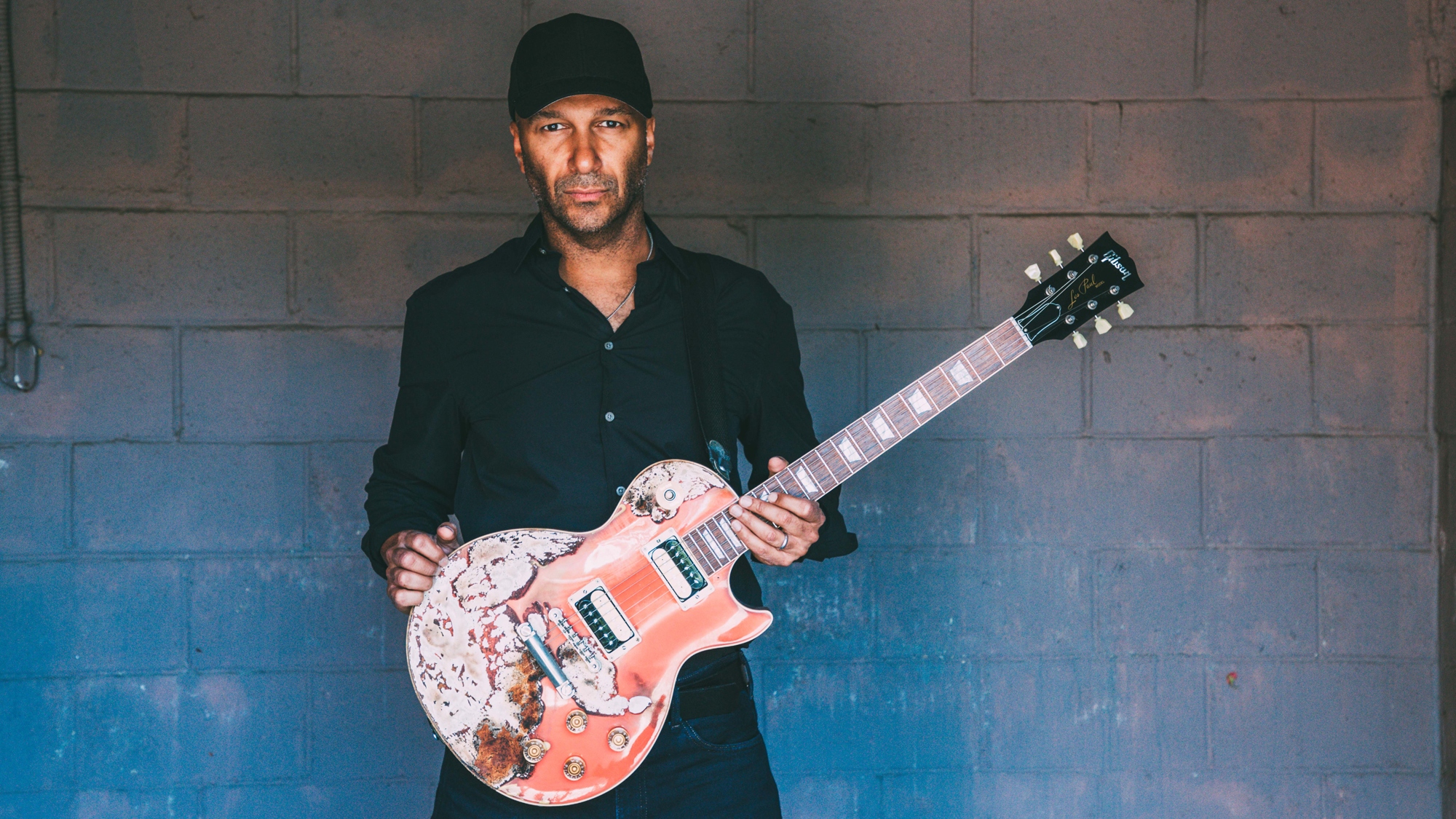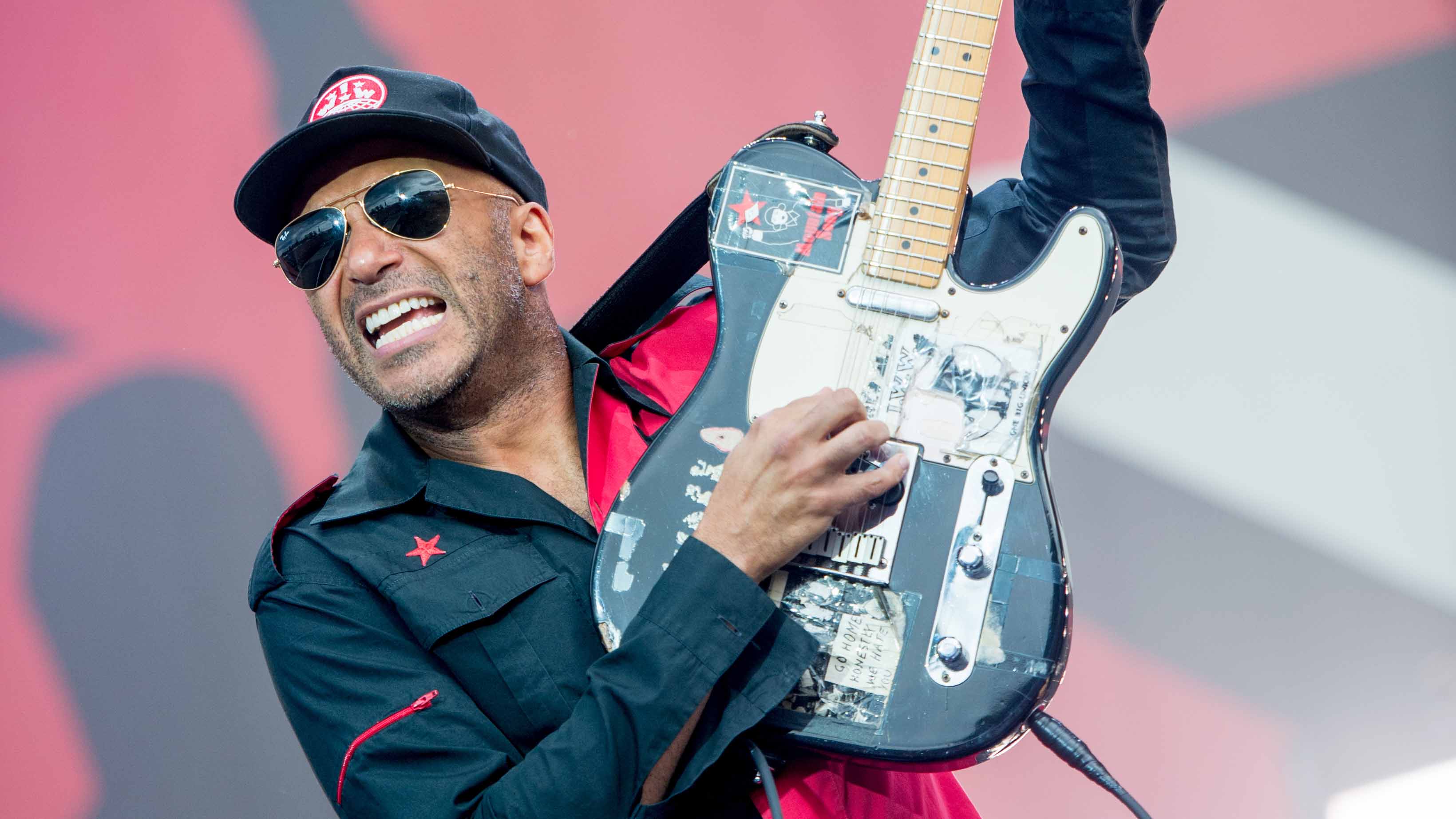Tom Morello: "The idea was to fight back against this world of radio with no electric guitar anymore"
Rage Against The Machine's sonic revolutionary reveals the guitar ideology behind star-studded solo album The Atlas Underground

When Tom Morello last spoke to MusicRadar for World Guitar Day, he expressed no doubt whatsoever on whether the instrument was still able to break socio-political boundaries, like it did when Rage Against The Machine exploded onto LA’s music scene with their 1992 self-titled debut.
And he should know. His latest litmus test, titled The Atlas Underground, takes his guitar far from its usual confines into the very deepest end of crossover - roping in an all-star cast of names across a wide net of music.
First single We Don't Need You featured rapper Vic Mensa and was followed by Rabbit’s Revenge, with American DJ Bassnectar, Outkast legend Big Boi and Run The Jewels rapper Killer Mike in tow. Elsewhere on the album are artists like Skrillex, Marcus Mumford of Mumford and Sons, Gary Clark Jr. and K.Flay - a brilliantly bonkers list of characters that are rarely mentioned in the same breath.
Here, RATM’s legendary gunslinger fills MusicRadar in on the story behind the collaborations, the new material he’s been working on with Prophets Of Rage and why Jimi Hendrix was so much more than just a talented guitarist…
What exactly does The Atlas Underground stand for?
“It’s a sonic conspiracy of like-minded artists from a diverse cross-section of genres who have come together with the lofty ambition of forging a fresh genre of music, which combines the Marshall stack-blasting, riff-rocking guitar shredding power of me with electronic elements of the present without compromising on either front. It had to be an unapologetic rock guitar album going beyond the sonic landscape that I’ve explored before…”
Gary Clark Jr is one of the most exciting blues players around. What was he like to work with?
Get the MusicRadar Newsletter
Want all the hottest music and gear news, reviews, deals, features and more, direct to your inbox? Sign up here.
“I’ve run into Gary at various shows, hotels and backstages through the years. It was a real pleasure spending a day with him and getting to know him as a player. We spent a lot of time jamming with a rhythm section, doing this old-school trade of licks back and forth for hours, having a blast. We started throwing lyrics back and forth, utilising his incredible and emotional vocal style, recording a ton of music.
Blues is the seed of rock ’n’ roll. It was the original spark of self-expression and personal inquiry, which then led to the blues players like Gary Clark Jr we hear today
“Then he went off and I sat down going through it, finding this riff here, that lyric there. Eventually I created Where It’s At Ain’t What It Is. When I played it back to him he was really psyched and said, ‘Wow man, that’s nothing like what we played in the room!’ Luckily, he had fair warning that what we were trying to do is take the powerful rocking noise in a more forward direction, haha!”
Many would say blues was the first rebel music, so it seems like a natural fit for you…
“Blues is the seed of rock ’n’ roll. It was the original spark of self-expression and personal inquiry, which then led to the blues players like Gary we hear today. It also came through the British bands, from The Beatles to The Stones to Zeppelin, and took on an entirely new context. Then it went through the punk-rock wringer.
“All of that makes me think, ‘Thank goodness for the guitar!’ It allows us to express ourselves and communicate with each other to create a sense of understanding… when you think about it, that’s quite a lot for one piece of wood with six strings to be able to do.”
GZA and RZA from the Wu-Tang Clan also make an appearance. Along with Big Boi, that’s a fair amount of rap royalty you hired in…

Tom Morello: "The guitar itself, independent of any lyrics, can be politically revolutionary"
“I’ve known Wu-Tang for years. RATM toured with them in 1997, so we go way back. They are hip-hop royalty. Big Boi is someone I just met in the making of this record. The lyrical theme of the album is social justice ghost stories and the idea that the heroes and martyrs of past struggles can inform the present, lighting the way to a more just and humane future…
“So I had this huge riff on the Bassnectar track and I contacted Big Boi saying, ‘This epidemic of police murdering African-Americans just has to stop and has to be commented on… are you down?’ He replied saying, ‘I’m in!’ When he was recording vocals for Rabbit’s Revenge, Killer Mike just happened to stop by so Big Boi text me asking if it would be okay for him to jump on the track. Of course I was like, ‘Uh, yes, that would be just fine… thank you!’”
How different did it feel to your work in Prophets Of Rage, who you’ve also been busy with?
“For this, my job was not just songwriter/guitar player, but also curator. I wanted to get artists from all kinds of genres and create this powerful and cohesive artistic statement. I wanted to fold all of these other artists into the conspiracy of The Atlas Underground, finding thematic and sonic commonalities between songs with singers from different words.
“Like Marcus Mumford, he’s a tremendous singer. He has young kids, too, so he would put them to bed and get on Skype with me after I’d finish the school run. It was like two dads in bathrobes with acoustic guitars writings this song together and it eventually becoming a scorching track. Very rock ’n’ roll!”
You told Lars Ulrich in an interview that you were hoping to be the Jimi Hendrix of now with this album…
Hendrix was a songwriter, with of course extraordinary guitar skills and flamboyant originality - elements I’ve tried to insert into my own music - but he was a songwriter first
“The ambition is to do just that - not speaking exclusively in guitar terms, because Hendrix was more than that in my view. He was a songwriter, with of course extraordinary guitar skills and flamboyant originality - elements I’ve tried to insert into my own music - but he was a songwriter first. And that’s something special. A lot of guitar guys think shred first, song never!
“The idea was to fight back against this world of radio with no electric guitar anymore whatsoever. Kids who grow up now, listening to the top playlists, probably haven’t heard much electric guitar. I want to combat that by interjecting wild guitar into a pop medium - just like Hendrix did - and blow it all up!”
What is the song you most want to be remembered for?
“There’s quite a few, to be honest. But the one that continues to have the visceral impact everywhere from South Korea to Johannesburg is Killing In The Name. That song even went to the top of the pop charts in the UK over Christmas in 2010, long after its original release. I still hear it everywhere around the world now… and of course I’m very happy about that.”
Your rig has stayed pretty consistent throughout your career. What was the general signal path on this album?

“Yup, my principal setup has remained the same 1988! It’s my Arm The Homeless guitar with the hippos on it, my Marshall JCM800 2205 50-watt head through my Peavey 4X12 cabinet. The effects are the original DigiTech Whammy pedal, a Cry Baby wah-wah, a digital delay that I think is probably the Boss one, an EQ pedal I use exclusively for a boost and that’s about it. Those are the primary arrows in the quiver! For the songs in drop D, I used the old 1982 Telecaster, the Sendero Luminoso one I’ve been using for years.
“That said, I did occasionally bring in different instruments for particular flavours. I have an Ovation Breadwinner guitar that I used, the first guitar I ever had - this $50 SG knockoff - which I refurbished a few years ago and sounds great now. I also picked up my burned Les Paul, that kind of Budweiser orange one, and a Jimmy Page Stairway To Heaven-looking Gibson double-neck.”
How is the new Prophets Of Rage material coming along? It was reported that 13 tracks were ready...
“We’re still in the studio having a great time recording. There are more songs coming - when we’ve got the right batch, we’ll release it. It’s coming along great and we had a tremendous time in summer over in Europe. If you’ve seen the video for Heart Afire, you’ll know it’s our love letter to how crazy our fans went this summer. We’ve had a busy year.”
And then of course you have a label to run...
“Yup! Firebrand Records is doing well. The whole idea behind the album is to provide artists with radical political content from various genres a platform they might not otherwise get. And that’s what the mission continues to be...”
The Atlas Underground is out on 12 October via BMG, and available to preorder now.
Amit has been writing for titles like Total Guitar, MusicRadar and Guitar World for over a decade and counts Richie Kotzen, Guthrie Govan and Jeff Beck among his primary influences. He's interviewed everyone from Ozzy Osbourne and Lemmy to Slash and Jimmy Page, and once even traded solos with a member of Slayer on a track released internationally. As a session guitarist, he's played alongside members of Judas Priest and Uriah Heep in London ensemble Metalworks, as well as handling lead guitars for legends like Glen Matlock (Sex Pistols, The Faces) and Stu Hamm (Steve Vai, Joe Satriani, G3).
“It’s about delivering the most in-demand mods straight from the factory”: Fender hot-rods itself as the Player II Modified Series rolls out the upgrades – and it got IDLES to demo them
“This time it’s all about creativity… Go crazy. Do whatever you wanna do with it”: Budding luthiers, assemble! Harley Benton’s DIY Kit Challenge is now open and there are prizes to be won










